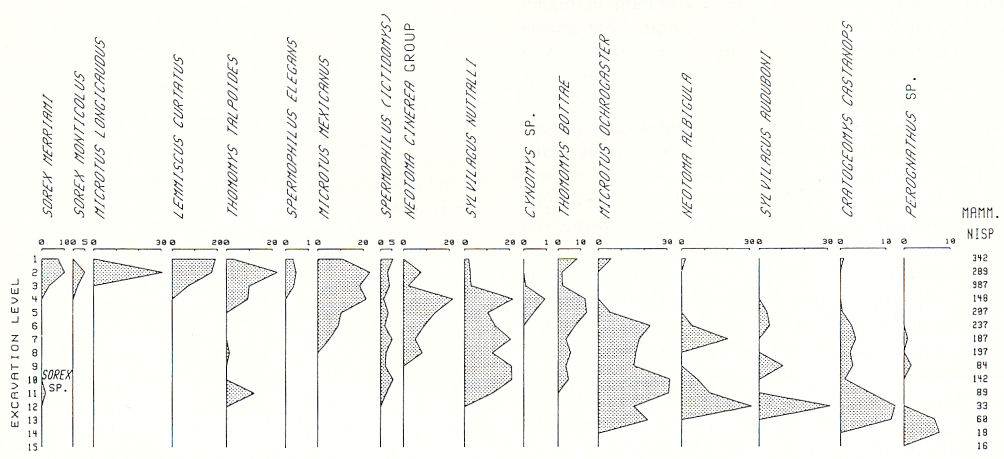Early Wisconsin to Mid Wisconsin // Mid Wisconsin to Pleniglacial // Full-glacial Wisconsin
The Animal Fair site of Dry Cave shows a stratigraphic sequence of faunas recording the transition from Mid-Wisconsin to near pleniglacial conditions (Harris 1993a). The time gap between the end of this sequence and that from the same site recording apparent full-glacial conditions (Harris 1989) is unknown, but likely short.
The abstract from Harris 1993a is given below.
Interpretation of a 1.5-m mid- to late-Wisconsinan stratigraphic sequence containing fossil vertebrates from the Animal Fair Site in Dry Cave, Eddy County, New Mexico, suggests a progression of habitats, all cooler and moister than today. Mid-Wisconsinan semiarid, moderately warm grasslands or grassy woodlands initially were replaced by cooler, more mesic, grassy woodlands; these were followed by cool, relatively dense sagebrush-grassland–woodland with elements from mixed-coniferous forest. A minor reversal of trend toward earlier, warmer conditions appears at the top of the section. Species collected from each level were basically harmonious until climatic deterioration, documented by invasion of new biotic elements at the end of the mid-Wisconsinan, permitted incursion of taxa associated with more boreal areas; these replaced most of the local fauna but failed to dislodge several taxa with southern affinities.
The progression can be seen in Fig. 1 of selected, climate-sensitive taxa.

Fig. 1. Relative abundances (%) of climate-sensitive taxa for each of 15 excavation units from Grid D7 of Animal Fair. Percent scales vary. After Harris (1993a).
Literature. Harris 1989, 1993a;
Last Update: 1 Oct 2009